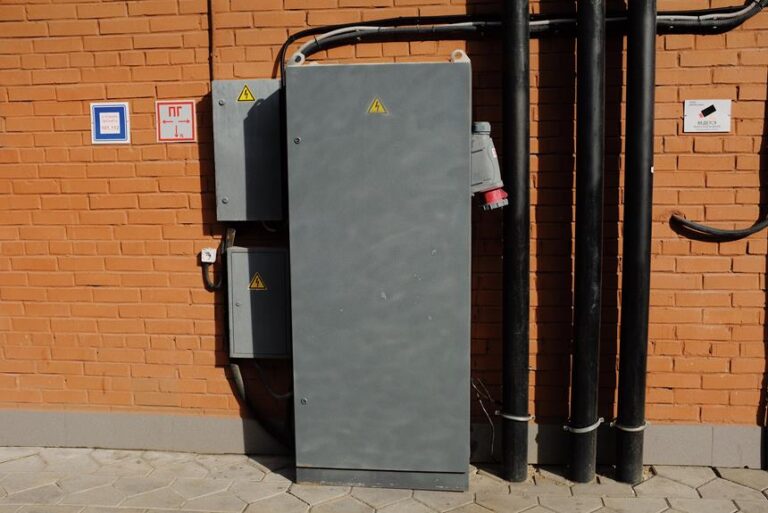Additive Manufacturing in Automotive Industry: Advantages and Applications
While traditional manufacturing methods have long been the norm in the automotive industry, the emergence of additive manufacturing has opened up new possibilities for efficiency, customization, and cost reduction.
However, skeptics may argue that the implementation of additive manufacturing in such a highly regulated and complex industry is impractical.
This article aims to dispel those doubts by highlighting the numerous advantages and applications of additive manufacturing in the automotive sector, showcasing its potential to revolutionize the way vehicles are designed, produced, and supplied.
Key Takeaways
- Additive manufacturing enhances production efficiency and cost-effectiveness in the automotive industry.
- The use of additive manufacturing enables the creation of complex designs and components, improving overall vehicle performance and fuel efficiency.
- Additive manufacturing promotes sustainability by utilizing recycled materials and reducing the need for large-scale inventory storage and transportation.
- The advancements in additive manufacturing techniques, such as multi-material printing and high-speed 3D printing, enhance capabilities and efficiency in the automotive industry.
Benefits of Additive Manufacturing in the Automotive Industry
The incorporation of additive manufacturing in the automotive industry offers numerous advantages, significantly enhancing production efficiency and cost-effectiveness. With the advent of advanced materials in 3D printing, automotive manufacturers can now create complex designs and components that were previously impossible or prohibitively expensive to produce using traditional manufacturing methods. This has led to increased design flexibility, allowing for the creation of lighter and stronger parts that improve overall vehicle performance and fuel efficiency.
Another significant benefit of additive manufacturing in the automotive industry is the potential for sustainability and the use of recycled materials. By utilizing recycled materials in 3D printing processes, manufacturers can reduce waste, conserve resources, and minimize their environmental impact. Additionally, additive manufacturing enables the production of parts on-demand, reducing the need for large-scale inventory storage and transportation, further contributing to a more sustainable and efficient supply chain.
Incorporating additive manufacturing in the automotive industry has the potential to revolutionize the way vehicles are manufactured and used. As advancements in additive manufacturing techniques continue to emerge, we will explore the various applications and advancements in the next section, highlighting the remarkable possibilities that additive manufacturing holds for the future of the automotive industry.
Advancements in Additive Manufacturing Techniques
As additive manufacturing continues to evolve and mature, new advancements in techniques and technologies are being developed, expanding the possibilities and applications within the automotive industry.
One of the key advancements in additive manufacturing techniques is the use of multi-material printing. This technique enables the creation of complex, multi-component parts in a single printing process. By combining different materials with varying properties, manufacturers can achieve enhanced functionality and performance in automotive components.
Another significant advancement is the development of high-speed 3D printing technologies. Traditional additive manufacturing processes can be time-consuming, limiting their adoption in high-volume production. However, recent advancements have led to the development of faster printing techniques, reducing production time and increasing the feasibility of using additive manufacturing in automotive mass production.
Furthermore, the introduction of new materials specifically designed for additive manufacturing has expanded the range of applications in the automotive industry. For instance, the use of high-performance polymers, such as carbon fiber-reinforced plastics, allows for the production of lightweight, yet strong and durable parts. These materials offer improved fuel efficiency and vehicle performance, making additive manufacturing an attractive option for automotive manufacturers.
In addition to advancements in techniques and materials, additive manufacturing is benefiting from the integration of digital technologies, such as artificial intelligence and machine learning. These technologies enable automated design optimization, real-time monitoring and quality control, and predictive maintenance, further enhancing the capabilities and efficiency of additive manufacturing in the automotive industry.
Cost Reduction Through Additive Manufacturing in Automotive Production
Significantly, additive manufacturing has the potential to frequently reduce costs in automotive production. By leveraging this technology, automakers can achieve cost savings through various means, such as material optimization, reduced assembly time, and elimination of tooling expenses.
One of the primary advantages of additive manufacturing is the ability to optimize material usage. With traditional manufacturing methods, a significant amount of material is wasted during the machining process. However, additive manufacturing allows for precise material deposition, minimizing waste and reducing the overall material cost.
Furthermore, additive manufacturing enables the production of complex parts as a single component, eliminating the need for extensive assembly. This not only reduces labor costs but also enhances the overall efficiency of the production process.
Additionally, the elimination of tooling expenses is another significant cost-saving benefit of additive manufacturing. Traditional manufacturing methods typically require the creation of specialized tools and molds, which can be expensive and time-consuming. In contrast, additive manufacturing allows for the direct production of parts without the need for tooling, resulting in substantial cost reductions.
To further highlight the potential cost savings of additive manufacturing in automotive production, the following table provides a comparison between traditional manufacturing and additive manufacturing in terms of cost factors:
| Cost Factors | Traditional Manufacturing | Additive Manufacturing |
|---|---|---|
| Material Waste | High | Low |
| Assembly Time | High | Low |
| Tooling Expenses | High | Low |
| Labor Costs | High | Low |
| Overall Production Costs | High | Low |
Enhancing Design and Customization With Additive Manufacturing
Additive manufacturing has revolutionized the automotive industry by offering improved product personalization, enhanced design flexibility, and a streamlined production process.
With additive manufacturing, automotive manufacturers can create highly customized products that meet the unique needs and preferences of individual customers. The technology allows for intricate and complex designs that were previously difficult or impossible to achieve with traditional manufacturing methods.
Additionally, additive manufacturing enables a more efficient and streamlined production process, reducing lead times and increasing overall productivity.
Improved Product Personalization
With the advent of additive manufacturing techniques, the automotive industry has witnessed a remarkable advancement in the realm of product personalization, allowing for enhanced design and customization. This has profound implications for both manufacturers and consumers alike.
Here are five key benefits of improved product personalization in the automotive industry:
- Freedom to design and create unique, one-of-a-kind vehicles that truly reflect individual tastes and preferences.
- Ability to cater to niche markets and cater to specialized needs, such as custom modifications for disabled individuals.
- Increased customer satisfaction and loyalty, as personalized vehicles provide a sense of ownership and identity.
- Reduction in waste and inventory costs, as additive manufacturing allows for on-demand production and eliminates the need for large stockpiles of pre-made parts.
- Empowerment of consumers to actively participate in the design process, fostering a sense of liberation and creative expression.
As the automotive industry embraces improved product personalization, it also opens doors to enhanced design flexibility, allowing for even greater innovation and customization possibilities.
Enhanced Design Flexibility
The incorporation of additive manufacturing techniques in the automotive industry has revolutionized design possibilities, offering an unprecedented level of design flexibility. Traditional manufacturing methods often impose limitations on design due to the constraints of molds, tooling, and assembly processes. However, with additive manufacturing, complex and intricate designs can be easily produced, enabling automotive manufacturers to push the boundaries of creativity and innovation.
This enhanced design flexibility allows for the creation of lightweight components with optimized geometries, resulting in improved performance and fuel efficiency. Furthermore, additive manufacturing enables the customization of automotive parts, allowing customers to personalize their vehicles according to their preferences. This level of design freedom not only enhances customer satisfaction but also provides automotive manufacturers with a competitive edge in the market.
With design flexibility achieved, the focus now shifts to the streamlined production process.
Streamlined Production Process
The implementation of additive manufacturing technology in the automotive industry allows for a streamlined production process, resulting in increased efficiency and cost savings. This innovative technology enables automotive manufacturers to enhance design and customization, thereby meeting the demands of consumers who desire liberation and individuality in their vehicles.
The advantages of a streamlined production process using additive manufacturing include:
- Reduction in tooling costs and lead times
- Elimination of assembly line constraints
- Optimization of part consolidation and lightweighting
- Efficient production of complex geometries
- Facilitation of on-demand manufacturing and just-in-time production
Impact of Additive Manufacturing on Supply Chain Efficiency
One key advantage of additive manufacturing in the automotive industry is the significant reduction in supply chain inefficiencies. Traditional manufacturing processes often involve complex supply chains with multiple suppliers and intermediaries, leading to delays, higher costs, and increased risk of errors.
However, additive manufacturing allows for the consolidation of the supply chain by enabling the production of parts on-demand, closer to the point of use. This reduces the need for extensive inventory storage and transportation, resulting in shorter lead times and improved overall supply chain efficiency.
Additive manufacturing also offers the potential for localized production, which further enhances supply chain efficiency. By decentralizing production and bringing it closer to the end-users, companies can reduce transportation costs and minimize the risk of disruptions caused by global events such as natural disasters or political conflicts.
Moreover, additive manufacturing enables the production of highly complex parts with fewer components. This simplification of the manufacturing process reduces the number of suppliers required, streamlines the supply chain, and minimizes potential quality issues.
Additionally, the ability to produce parts on-demand and in smaller quantities reduces the need for large-scale production and inventory management, allowing companies to respond quickly to changes in market demand. This flexibility in production also helps to optimize the supply chain by eliminating the need for excessive stockpiling and reducing the risk of obsolete inventory.
Future Applications of Additive Manufacturing in the Automotive Sector
Additive manufacturing, also known as 3D printing, holds immense potential for the future of the automotive industry. One of the key advantages of additive manufacturing is the ability to create complex designs that were previously impossible with traditional manufacturing methods, opening up new design possibilities for automotive components.
Additionally, additive manufacturing has the potential to significantly reduce both cost and time in the manufacturing process, allowing for more efficient production of automotive parts. These advancements in additive manufacturing technology have the potential to revolutionize the automotive sector and drive innovation in the industry.
New Design Possibilities
Introducing innovative design possibilities, the future applications of additive manufacturing in the automotive sector hold tremendous potential for revolutionizing the industry. With advancements in additive manufacturing technology, car manufacturers can now explore new design concepts that were previously impossible or impractical.
Here are some of the exciting possibilities that additive manufacturing brings to the automotive industry:
- Complex geometries and organic shapes can be easily achieved, allowing for more aerodynamic vehicles.
- Lightweight structures can be created, reducing the overall weight of vehicles and improving fuel efficiency.
- Customization options can be expanded, enabling customers to personalize their vehicles according to their preferences.
- Integration of multiple components into a single printed part can simplify assembly processes and reduce the number of parts required.
- Prototyping and rapid iteration can be accelerated, allowing for faster development cycles and shorter time to market.
As additive manufacturing continues to evolve, these design possibilities will undoubtedly reshape the automotive industry. With the introduction of new materials and techniques, the potential for even more innovative designs is limitless. This transition into a new era of vehicle design is not only liberating for car manufacturers but also for consumers who seek unique and personalized transportation solutions.
Now, let's explore how additive manufacturing can also bring significant cost and time savings to the automotive sector.
Cost and Time Savings
The implementation of additive manufacturing in the automotive sector holds great potential for significant cost and time savings. This technology allows for the production of complex parts with fewer manufacturing steps, reducing the need for expensive tooling and assembly processes.
Additionally, additive manufacturing enables the creation of lightweight components, resulting in improved fuel efficiency and reduced material costs. A study conducted by Deloitte found that additive manufacturing can lead to cost savings of up to 50% in the production of certain automotive components.
Furthermore, additive manufacturing allows for faster prototyping and customization, reducing time-to-market and enabling manufacturers to quickly respond to customer demands.
As the technology continues to evolve, the automotive industry is expected to further leverage additive manufacturing for cost and time savings, revolutionizing the way vehicles are designed and manufactured.
Frequently Asked Questions
What Are the Main Challenges Faced in Implementing Additive Manufacturing in the Automotive Industry?
The main challenges faced in implementing additive manufacturing in the automotive industry include high costs of equipment and materials, limited design capabilities, lack of standardized processes, and the need for skilled workforce and training.
How Does Additive Manufacturing Impact the Environmental Sustainability of the Automotive Sector?
Additive manufacturing has a significant impact on the environmental sustainability of the automotive sector. By enabling the production of complex and lightweight parts, it reduces material waste, energy consumption, and carbon emissions, contributing to a more sustainable and efficient industry.
What Are Some Limitations or Drawbacks of Additive Manufacturing in Automotive Production?
Additive manufacturing in automotive production has certain limitations and drawbacks. These include the high cost of equipment and materials, limited size and complexity of parts that can be produced, and slower production speeds compared to traditional manufacturing methods.
How Does Additive Manufacturing Affect the Overall Safety and Reliability of Automotive Components?
Additive manufacturing has both advantages and drawbacks in terms of safety and reliability in the automotive industry. Understanding the impact of this technology on component performance is crucial to ensure the overall safety and reliability of automotive vehicles.
What Are the Key Skills and Expertise Required for Successfully Implementing Additive Manufacturing in the Automotive Industry?
Successful implementation of additive manufacturing in the automotive industry requires a range of key skills and expertise. These include knowledge of materials science, design for additive manufacturing, process optimization, quality control, and a deep understanding of automotive manufacturing processes.
Conclusion
In conclusion, additive manufacturing has emerged as a game-changer in the automotive industry, offering numerous benefits and applications.
The advancements in additive manufacturing techniques have revolutionized the production process, leading to cost reduction and improved efficiency.
Moreover, it has enabled enhanced design capabilities and customization options, empowering manufacturers to meet the ever-evolving consumer demands.
With its potential to transform the supply chain, additive manufacturing is poised to play a pivotal role in the future of the automotive sector, driving innovation and progress.
Like a well-oiled machine, additive manufacturing fuels the automotive industry with precision and efficiency, propelling it towards a promising future.









